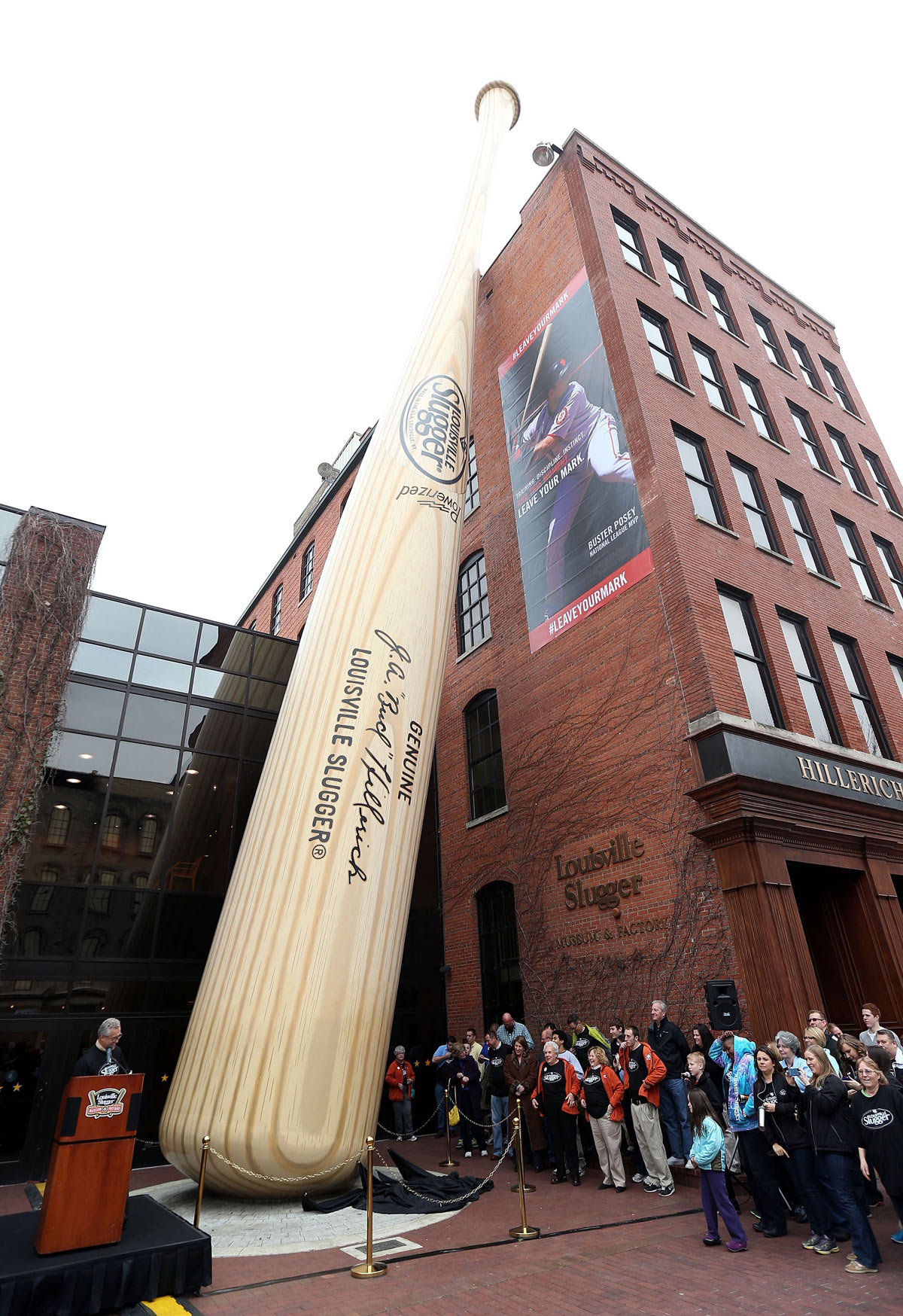LOUISVILLE, Ky. – When it’s Kentucky Derby season in Louisville, money seems to flow faster than the Ohio River. Hotels and restaurants fill up; bars serve mint juleps and fine Kentucky bourbon. Shopping includes a hunt for the colorful hats worn as a Derby tradition. Parties are thrown, and wagers are plunked down on can’t-miss colts and longshots alike as fans guess which horse will win the famous race at Churchill Downs.

Yet there are other sure bets for relaxation and entertainment that don’t cost a thing as folks head to bluegrass country for the Derby, which takes place May 3. Kentucky’s largest city offers a mix of free contemporary and historic sites – along with blooming dogwood trees.
CAVE HILL CEMETERY
The final resting place for many of Louisville’s most prominent citizens of the 19th and 20th centuries, the nearly 300-acre (120-hectare) cemetery opened in 1848. It features ornate marble and granite monuments, shaded by trees seemingly as distinctive as the headstones dotting the landscape. Trees of many varieties loom over the rolling grounds situated east of downtown. Each spring and fall, the cemetery is ablaze in colours. It draws tours from groups of garden, Civil War and history buffs. About 5,500 soldiers are buried here, mostly from the Civil War.
Luminaries buried in the cemetery include politicians, business leaders and bourbon barons. Two of the most notable are George Rogers Clark – an early frontiersman and soldier and the brother of William Clark, who co-led the Lewis and Clark expedition – and Colonel Harland Sanders, the founder of Kentucky Fried Chicken. Sanders’ granite memorial features a bust of the goateed entrepreneur, whose likeness is still synonymous with the chicken chain he started. Visitors sometimes place a bucket of chicken at his grave.
WATERFRONT PARK
- Gas prices in Ontario, Quebec to jump to highest level in 2 years: analyst
- Canada’s income gap is growing. Will Budget 2024 help affordability?
- Shoppers faces proposed class action over claims company is ‘abusive’ to pharmacists
- What’s going on with the Cybertruck? Tesla seems to have halted deliveries
In a town blessed with an abundance of parks known for foliage, nature centres and scenic vistas, the 85-acre (34-hectare) Waterfront Park serves as Louisville’s northern doorstep. Visitors can walk, jog and bike along paths that offer scenic views of the Ohio River and downtown Louisville. Linger long enough, and the chances are good that you’ll see a massive barge floating along the Ohio, a busy waterway for commerce.
The park’s Great Lawn stretches out as a giant front yard for downtown. There are playgrounds and an amphitheatre. A popular attraction is the Big Four Bridge, an old railroad span that’s been turned into a pedestrian and cycling path spanning the Ohio River between Louisville and Jeffersonville, Ind.
CONTEMPORARY ART
Contemporary art is a mainstay at the acclaimed 21c Museum Hotel and the exhibitions are free to the public. Artwork is on display in 9,000 square feet (836 square meters) of exhibition space in the award-winning boutique hotel in downtown Louisville. The artwork ranges from quirky and whimsical to daring, dark and thought-provoking. It was a goal of the hotel’s owners to introduce contemporary art to a wider audience.
The exhibitions feature internationally acclaimed artists as well as emerging artists, some from the area. The hotel offers free cultural programming for the public that includes artist lectures and film screenings. There are free, twice-a-week tours of the exhibitions. The hotel’s most recognizable artwork is outside looming over Main Street – a 37-foot-tall (11-meter-tall) replica of Michelangelo’s David. The replica created by a Turkish artist is made of steel and fiberglass and was painted gold.
BASEBALL
Known as a basketball hotbed, the city’s name is also synonymous with baseball. Visitors can trace that baseball heritage along the Louisville Slugger Walk of Fame, stretching about a mile (1.6 kilometres) from the Louisville Slugger Museum & Factory to the city’s minor-league ballpark. Many of the game’s greatest players – from Babe Ruth and Ty Cobb to George Brett and Ken Griffey Jr. – are enshrined with bronze castes of the Louisville Slugger model bats they used, along with bronze home plates that highlight their careers.
At the downtown Slugger Museum, visitors can stroll through the main lobby for free. The lobby’s features include the Signature Wall – emblazoned with the signatures of more than 8,000 players who signed contracts to use Louisville Slugger bats. Visitors can grip replica bats used by some of the game’s greatest sluggers. Youngsters can climb on a ball and glove sculpture made of Kentucky limestone. Hovering outside is one of the city’s most popular landmarks – a 120-foot-tall (37-meter-high) bat made of steel and hand-painted to resemble wood.
OLD LOUISVILLE
The stately Old Louisville neighbourhood stands out in a city filled with distinctive neighbourhoods. Old Louisville features rows of Victorian homes, some etched with stained glass windows, along tree-lines streets. The neighbourhood was home to some of the city’s wealthiest residents in the late 19th century. The area went into decline in the early to mid-20th century but has since undergone revitalization. The neighbourhood stretches from just north of the University of Louisville’s main campus to just south of downtown Louisville. Each fall the neighbourhood hosts the renowned St. James Court Art Show.



Comments